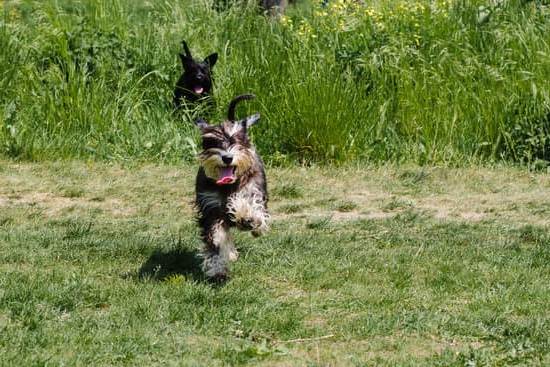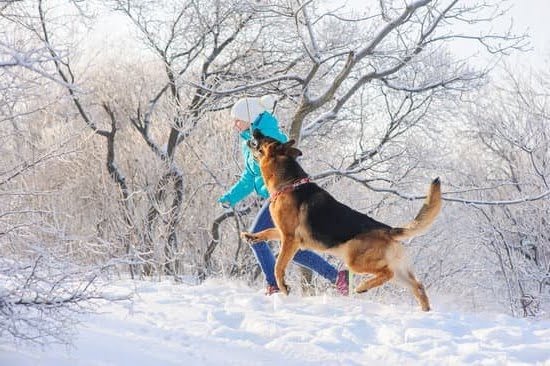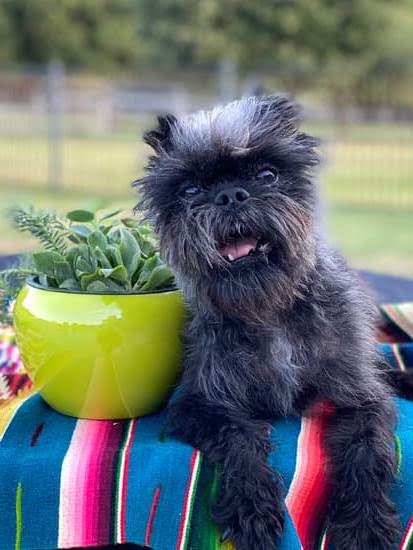If you’ve ever wondered how to make a place board for dog training, look no further. A place board can be an incredibly useful tool in obedience training and can help improve your dog’s focus, impulse control, and overall behavior. In this article, we will explore the benefits of using a place board in dog training, the materials and tools needed to create one, and provide a step-by-step guide on making your own.
Using a place board in dog training provides numerous benefits for both you and your furry friend. It serves as a designated spot where your dog can relax and remain calm, providing structure and boundaries during training sessions. Additionally, it helps teach your dog to stay in one place until released, which is crucial for activities such as grooming or when guests come over.
To create a place board, you’ll need some basic materials and tools that are easily accessible. This article will guide you through selecting the right size and shape for the place board, choosing durable and comfortable materials for construction, cutting and assembling the board itself, as well as adding a non-slip surface for safety.
Introducing the concept of the place board to your dog is another important step in the training process. We will cover starting with basic commands on the place board and gradually increasing difficulty and duration. Furthermore, we will explore effective training techniques utilizing the place board such as teaching stay and settle commands, incorporating distance and distraction in training exercises, as well as using it for impulse control workouts.
Stay tuned as we delve into common challenges that may arise while training with a place board such as resistance or fear towards the board, difficulty generalizing behavior to various environments, or lack of motivation from your dog. We’ll provide troubleshooting tips to overcome these obstacles.
Maintaining and enhancing your place board training is essential for continued success. Regular cleaning tips will be shared along with ideas on adding varied stimuli to keep training engaging. Finally, we’ll discuss how to gradually fade out the use of the place board during training sessions, unlocking the full potential of your dog.
By utilizing a place board in your dog training efforts, you can establish structure and boundaries while improving your dog’s obedience and behavior. So let’s get started on creating and utilizing this valuable tool to enhance your dog’s training experience.
Benefits of Using a Place Board in Dog Training
One of the key benefits of using a place board in dog training is that it helps create a designated space for your dog to settle and focus. Dogs are naturally den animals, and having a specific spot to go to can help them feel secure and calm in the training environment. By teaching your dog to utilize the place board, you can easily control their movement and behavior during training sessions.
Another advantage of using a place board is that it helps improve your dog’s impulse control. Dogs often have a tendency to want to explore and investigate their surroundings, which can lead to distractions or disobedience during training. However, when trained properly on a place board, dogs learn valuable self-control skills by staying in one place and resisting the urge to wander off.
Using a place board also provides consistency in training. When introducing new commands or exercises, having your dog stay on the place board will prevent them from guessing or getting ahead of the lesson. This creates clear boundaries for your dog and allows them to fully understand what is expected of them in each training session.
| Benefit | Description |
|---|---|
| Creates designated space | Provides dogs with a secure area to settle and focus during training sessions. |
| Improves impulse control | Teaches dogs to resist distractions and stay in one place, improving their self-control. |
| Ensures consistency | Establishes clear boundaries for dogs during training, preventing guesswork or confusion. |
Materials and Tools Needed to Make a Place Board
To make a place board for dog training, you will need a few materials and tools. Here is a list of what you will need to get started:
Materials
- Plywood or solid wood: Choose a sturdy material that is at least ½ inch thick. The size of the board will depend on the size of your dog, but as a general rule, it should be large enough for them to comfortably sit, lie down, and stand on.
- Non-slip surface: To ensure your dog’s safety and prevent any accidents, you will need a non-slip surface for the top of the place board. Options include rubber matting, grip tape, or adhesive stair treads.
- Wood screws or nails: These will be used to secure the pieces of plywood or solid wood together.
- Sandpaper: Use sandpaper to smooth out any rough edges on the wood.
Tools
- Measuring tape: This will help you determine the appropriate dimensions for your place board.
- Saw or jigsaw: You will need either a saw or jigsaw to cut the plywood or solid wood into the desired shape and size.
- Screwdriver or hammer: Depending on whether you choose screws or nails, you will need either a screwdriver or hammer to attach the different pieces together.
- Drill (optional): If you prefer using screws instead of nails, a drill can be handy for pre-drilling holes before inserting them into the wood.
Make sure to gather all these materials and tools before starting with your place board project so that you have everything readily available.
It’s important to note that while these materials and tools are necessary for making a basic place board, feel free to get creative and personalize it based on your preferences and your dog’s needs. For example, you may want to add padding or choose different colors for the non-slip surface to make it more appealing to your dog.
The key is to ensure that the place board is comfortable, sturdy, and safe for your furry friend to use during training sessions.
Step-by-Step Guide on Making a Place Board for Dog Training
Making a place board for dog training is a relatively simple and cost-effective project that can greatly enhance your training sessions with your furry friend. By providing a designated space for your dog to settle on, a place board helps teach them important concepts such as stay, settle, and impulse control. In this step-by-step guide, we will walk you through the process of making your own place board.
The first step in creating a place board is choosing the right size and shape. Consider your dog’s size and breed when determining the dimensions of the board. As a general rule of thumb, the place board should be large enough for your dog to comfortably lie down on, but not too spacious that they feel overwhelmed. The shape can vary depending on personal preference, but many trainers opt for rectangular boards.
Next, gather the materials needed for constructing the place board. You will need plywood or MDF (medium-density fiberboard) cut to the desired size of the board, which can be found at most home improvement stores. Additionally, you will need screws or nails to secure the pieces together, as well as tools such as a saw and screwdriver.
To assemble the place board, start by cutting the plywood or MDF to the desired size and shape using a saw. Smooth out any rough edges with sandpaper if necessary. Then, attach support braces underneath each corner of the board using screws or nails to ensure stability. If desired, you can add additional support in the middle of larger boards.
Lastly, consider adding a non-slip surface to ensure safety during training sessions. You can achieve this by attaching adhesive grip tape or rubber mats onto the surface of the place board. This will prevent your dog from slipping or sliding while settling on their designated spot.
By following these steps, you can create a custom-made place board for your dog’s training needs. Remember to always supervise your dog while they are using the place board and gradually introduce it to them using positive reinforcement. With a well-designed and sturdy place board, you can unlock your dog’s full potential in training and strengthen your bond with them.
How to Introduce the Place Board to Your Dog
Introducing the place board to your dog is an important step in their training journey. It helps them understand that the place board is a designated area where they should go and stay whenever given the command. The process of introducing the place board to your dog should be gradual and positive, making it a pleasant experience for both you and your furry friend.
To start off, choose a quiet and familiar location where you can work with your dog without distractions. Place the board on the ground and encourage your dog to investigate it. You can use treats or their favorite toy to lure them towards the board. When they show interest or interact with the board in any way, reward them with praise and treats.
Once your dog is comfortable around the place board, you can start incorporating basic commands such as sit or stay while they are on it. Use clear verbal cues and reward them for complying with these commands while staying on the board. This helps establish a strong association between the command and being on the place board.
Gradually increase the difficulty level by asking your dog to stay on the place board for longer durations or by adding distractions in their environment. Remember to reward them generously for maintaining their position on the board despite these challenges. It’s important to keep each training session short and end it on a positive note, so that your dog remains enthusiastic about using the place board in future sessions.
Starting with Basic Commands on the Place Board
- Begin by teaching simple commands such as sit or down while your dog is on the place board.
- Use consistent hand signals along with verbal cues to reinforce these commands.
- Reward your dog with treats or praise when they successfully follow these commands while remaining on the place board.
Gradually Increasing Difficulty and Duration
- Once your dog is comfortable following basic commands, increase difficulty by introducing longer durations of staying on the place board.
- Start with short durations and gradually increase the time your dog spends on the board.
- Make sure to reward them often during these longer durations to keep them motivated and engaged.
By following these steps, you can successfully introduce the place board to your dog in a positive and effective manner. Remember to always be patient, consistent, and encouraging throughout the process. Building a solid foundation with the place board will set you and your dog up for success in future training endeavors.
Effective Training Techniques Utilizing the Place Board
Training dogs using a place board can be an effective way to teach them important skills and behaviors. The place board serves as a defined space where dogs learn to stay, settle, and exhibit impulse control. In this section, we will explore some techniques that can help you maximize the benefits of using a place board in your training sessions.
1. Teaching Stay and Settle Commands on the Place Board: The place board provides an excellent platform for teaching your dog the stay and settle commands. Start by luring your dog onto the place board and reward them for standing or sitting still.
Gradually increase the duration of their stay on the board before giving them a release cue. By consistently practicing this exercise, your dog will learn to associate the place board with relaxation, making it easier for them to settle down in various situations.
2. Incorporating Distance and Distraction in Training: Once your dog has mastered basic commands on the place board, it’s time to introduce distance and distraction to their training. Begin by standing near the board and gradually move away while giving commands such as sit or stay. Increase the difficulty level by adding distractions like toys or noises. By challenging your dog’s focus and obedience on the place board, you are strengthening their impulse control skills.
3. Using the Place Board for Impulse Control Exercises: Training impulse control is essential for preventing unwanted behaviors like jumping or lunging. The place board can be utilized for exercises that enhance impulse control. For example, teach your dog to wait patiently on the board before being allowed to approach food or toys placed nearby. This exercise helps develop patience and self-restraint in your dog.
By implementing these techniques during your training sessions with a place board, you can effectively shape desired behaviors in your dog while promoting obedience and self-control. Remember to be patient and consistent in your training, gradually increasing the difficulty level as your dog progresses. With time and practice, you will see remarkable improvements in your dog’s behavior both on and off the place board.
| Training Technique | Description |
|---|---|
| Teaching Stay and Settle Commands on the Place Board | Guide your dog to stand or sit still on the place board, gradually increasing duration of stay before giving a release cue |
| Incorporating Distance and Distraction in Training | Gradually move away from the place board while giving commands, adding distractions to challenge focus and obedience |
| Using the Place Board for Impulse Control Exercises | Train patience and self-restraint by making your dog wait for food or toys placed near the place board. |
Troubleshooting Common Challenges While Training with a Place Board
Dog’s Resistance or Fear towards the Place Board
One common challenge that dog owners may encounter when using a place board in training is a dog’s resistance or fear towards the place board. This can be due to various reasons such as unfamiliarity, previous negative experiences, or natural timidness. It is crucial to approach this challenge with patience and positive reinforcement.
To address a dog’s resistance or fear towards the place board, it is important to first create a positive association with the board. Start by placing treats near the board and allowing your dog to approach and investigate it at their own pace.
Once they show signs of comfort around the board, gradually encourage them to step onto it by rewarding any voluntary movement towards it with treats or praise. Make sure to use plenty of encouragement and rewards to build their confidence.
If your dog continues to show resistance, you can try using luring techniques with treats. Hold a treat in your hand and guide your dog onto the place board, rewarding them when they successfully step onto it. Repeat this process several times until your dog becomes more comfortable stepping onto and staying on the place board.
Difficulty in Generalizing the Behavior to Various Environments
Another common challenge you may encounter while training with a place board is difficulty in generalizing the behavior to various environments. Dogs are experts at associating specific cues with certain locations or contexts, which means they may struggle with performing behaviors learned on the place board in different settings.
To tackle this challenge, it is essential to gradually introduce different environments during training sessions. Start by practicing commands on the place board in a familiar indoor setting where distractions are minimal. Once your dog shows consistency and understands the behavior well in this environment, gradually increase the level of difficulty by moving to different rooms inside your home.
Next, move on to practicing commands on the place board outdoors or in more distracting environments such as parks or busy streets. Remember to reinforce the behavior with rewards and praise when your dog successfully performs the command on the place board in different contexts. By gradually exposing them to various environments, you will help your dog generalize the behavior and understand that the commands on the place board apply in any situation.
Overcoming Dog’s Lack of Motivation on the Place Board
Some dogs may show a lack of motivation when it comes to training on the place board. This can occur if they do not find the training exercises engaging enough or do not understand the purpose behind them. To overcome this challenge, it is important to make training sessions on the place board fun, rewarding, and mentally stimulating for your dog.
One effective way to enhance motivation is by incorporating interactive toys or food puzzles during training sessions on the place board. These toys can be filled with treats or their regular kibble, encouraging your dog to engage with them while staying on the board. This will make the experience more enjoyable for your dog and increase their motivation to stay focused during training.
Additionally, regularly varying training exercises and introducing new challenges can help maintain your dog’s interest and prevent boredom. You can incorporate obstacles, agility equipment, or even scent work games into your place board training routine to keep your dog engaged and excited about learning new behaviors.
By ensuring that each training session is enjoyable and rewarding for your dog, you can overcome their lack of motivation and unlock their full potential during place board training.
Maintaining and Enhancing the Place Board Training
Once you have successfully introduced the place board to your dog and have started incorporating it into their training routine, it is important to maintain and enhance the effectiveness of this tool. Regular maintenance and adding varied stimuli will keep your dog engaged and motivated during training sessions. Additionally, gradually fading out the use of the place board will help your dog generalize their behavior in various environments.
Regular Cleaning and Maintenance Tips:
- Keep the place board clean by regularly wiping it down with a pet-safe disinfectant.
- Ensure that any non-slip surfaces are securely attached and in good condition.
- Inspect the board for any signs of wear or damage, such as splintering or loose edges. Replace or repair as needed to maintain safety.
Adding Varied Stimuli to Keep the Training Engaging:
- Add different objects or toys near the place board to create distractions for your dog. This will help them learn to remain focused on their designated spot despite external stimuli.
- Gradually introduce different surfaces (e.g., grass, carpet) on top of or around the place board to teach your dog to generalize their behavior across different environments.
- Incorporate various commands and exercises on the place board, such as sit-stay, down-stay, or even tricks like balancing objects on their paws while remaining on the board.
Gradually Fading Out the Use of the Place Board during Training Sessions:
- Once your dog has mastered staying on the place board for extended durations with distractions present, begin reducing their reliance on it by gradually increasing distances between them and the board while still maintaining the stay command.
- Progressively introduce similar commands and settle behaviors in different areas of your home or other locations to ensure that your dog can generalize their training.
- Continue reinforcing the importance of staying in a designated spot, even without the physical presence of the place board. This will enable your dog to display the desired behavior in any situation.
By following these maintenance and enhancement techniques, you can make sure that your place board training remains effective and beneficial for your dog. Remember, consistency and patience are key when using this tool, and with time, practice, and positive reinforcement, you can unlock the full potential of your furry friend’s obedience skills.
Conclusion
In conclusion, using a place board in dog training can greatly benefit both you and your furry companion. The step-by-step guide provided in this article offers clear instructions on how to make a place board, as well as how to introduce it to your dog and incorporate effective training techniques. By utilizing the place board, you can unlock the full potential of your dog and enhance their obedience, impulse control, and overall behavior.
One of the key benefits of using a place board is that it provides a designated space for your dog to go to and stay on. This helps them understand boundaries and allows you to easily teach commands such as “stay” and “settle.”
The place board can also be used for distance work and distraction training, allowing your dog to remain focused even in challenging situations. Additionally, incorporating impulse control exercises on the place board can help address any impulsive or reactive behaviors your dog may have.
While training with the place board, it is important to address any challenges that may arise. If your dog shows resistance or fear towards the place board initially, patience and positive reinforcement can help build their confidence.
It is also necessary to generalize the desired behavior trained on the place board to various environments, gradually increasing difficulty and duration throughout training sessions. Finally, maintaining and enhancing the place board training involves regular cleaning and maintenance as well as adding varied stimuli to keep the training engaging.
Frequently Asked Questions
What size place board for dog training?
The size of the place board for dog training can vary depending on the size and breed of the dog, as well as the specific training goals. Generally, a place board should be large enough for the dog to comfortably stand or lie down on it, without feeling cramped or restricted.
It should also be stable and secure to prevent any accidents or injuries during training. A common size range for a place board can be around 2-3 feet long and 1-2 feet wide, but it is important to consider the individual dog’s needs and adjust accordingly.
What can I use for a place board?
When it comes to choosing materials for a place board in dog training, there are various options available. Many people prefer using sturdy yet lightweight materials such as plywood or heavy-duty plastic boards. These materials are easy to clean and can withstand the wear and tear of regular use.
Some trainers also use yoga mats, foam pads, or even durable carpets as an alternative to traditional place boards. The main objective is to provide a designated area where the dog can go to learn and practice commands such as “place” or “stay.” Ultimately, what matters is that the chosen material is safe, comfortable for the dog, and suitable for training purposes.
What are placement boards for dog training?
Placement boards in dog training refer to designated areas or surfaces that are used to teach dogs specific behaviors like staying in one spot or going to a designated area when commanded. They serve as a visual marker for dogs and help them understand where they need to be during certain exercises or tasks. By teaching a dog how to utilize a placement board effectively, trainers can enhance their ability to remain focused and maintain self-control in different situations.
The use of placement boards can be particularly helpful in teaching dogs concepts like boundary control, impulse control, or duration work in obedience training. These tools assist with creating structure and reinforcing desired behaviors while providing dogs with clear guidance on where they should position themselves during specific activities.

Welcome to the blog! I am a professional dog trainer and have been working with dogs for many years. In this blog, I will be discussing various topics related to dog training, including tips, tricks, and advice. I hope you find this information helpful and informative. Thanks for reading!





